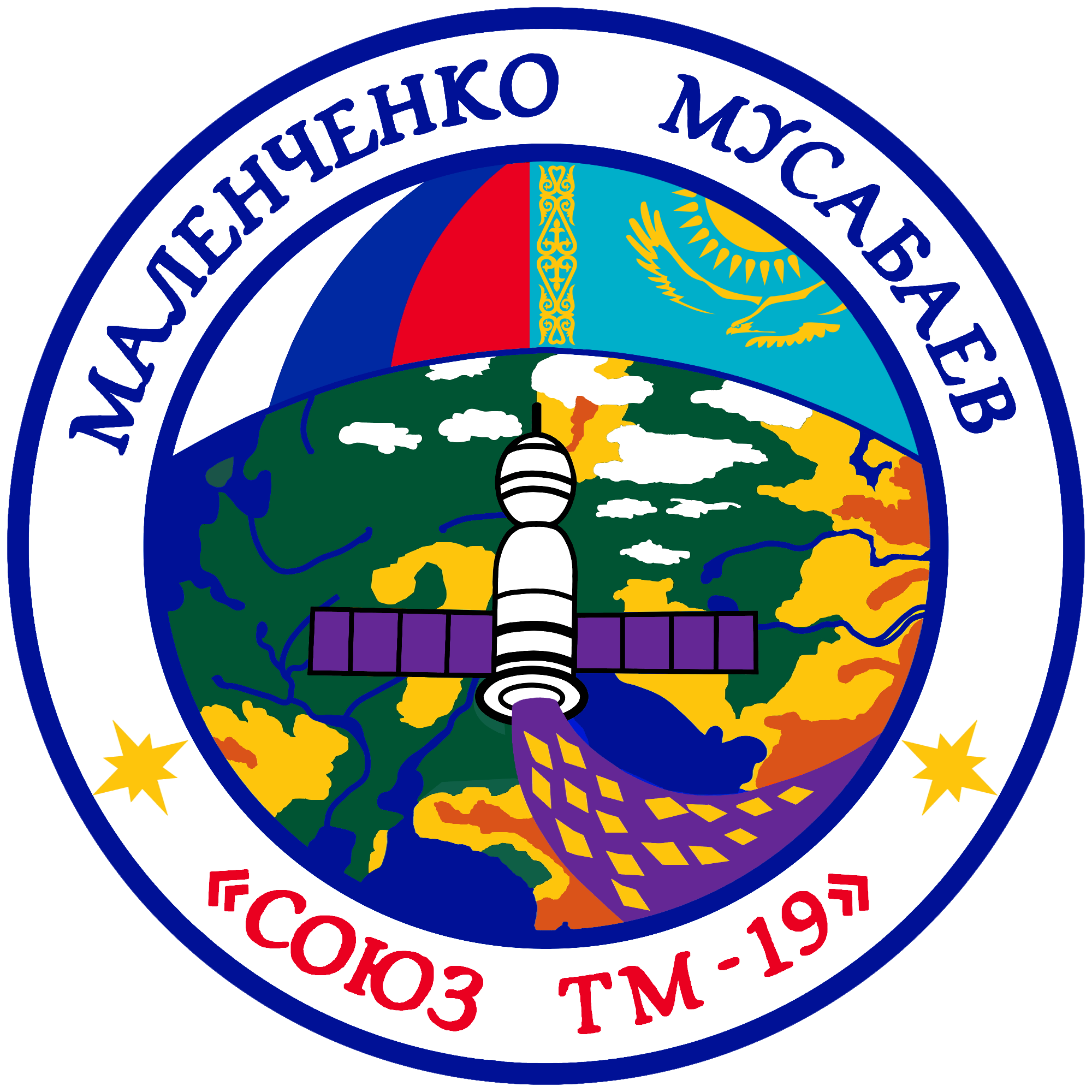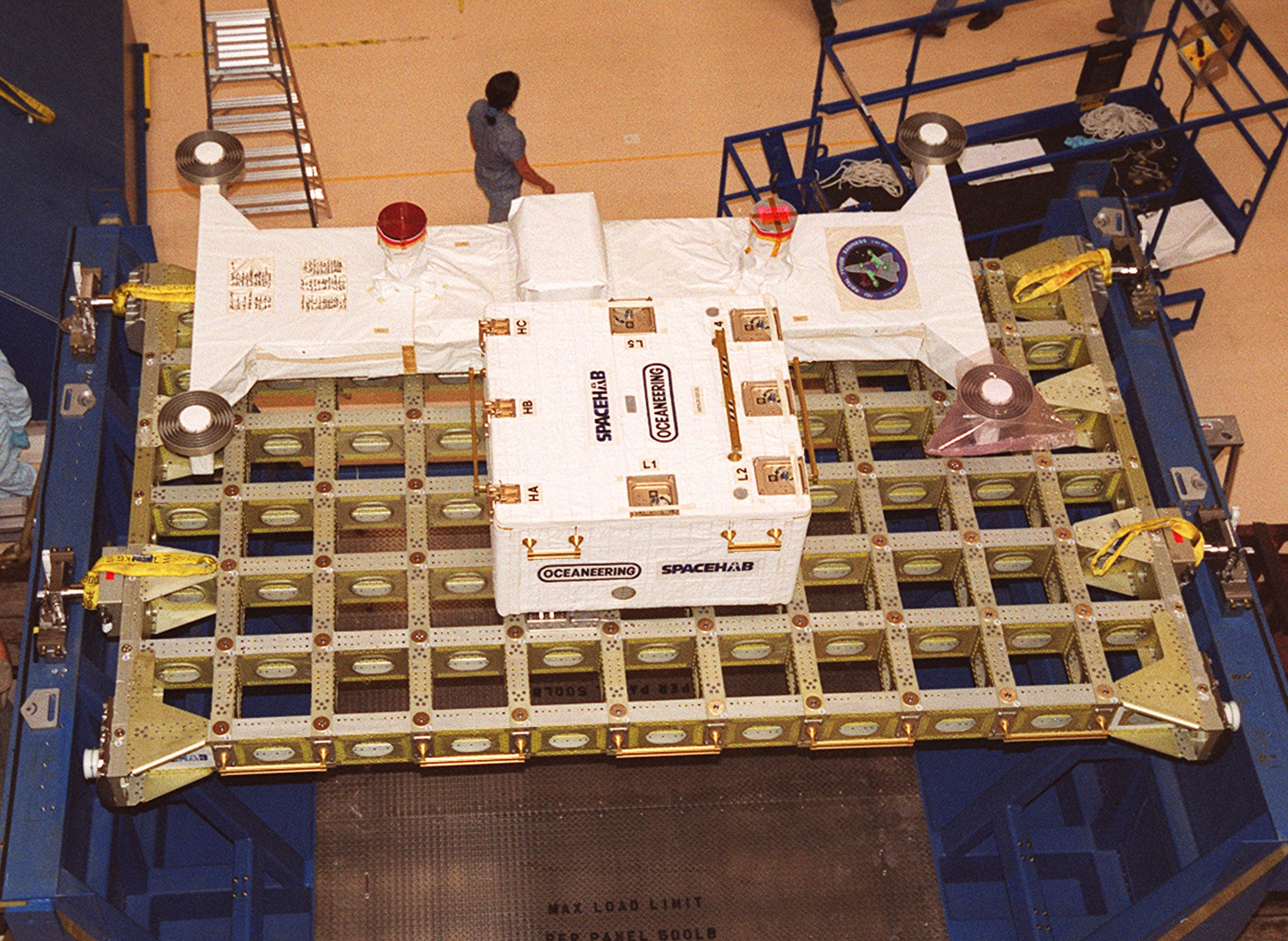|
Expedition 7
Expedition 7 was the seventh expedition to the International Space Station. Crew Planned crew before ''Columbia'' disaster Mission parameters *Perigee: 384 km *Apogee: 396 km *Inclination: 51.6° *Period: 92 min Mission objectives The seventh crew of the International Space Station lifted off in Soyuz TMA-2 from the Russian Space Agency's Baikonur Cosmodrome in Kazakhstan on 25 April 2003, at 05:56:20 UTC. The Soyuz docked on 28 April 2003 and took over command of the ISS. The ''Space Shuttle'' fleet had been grounded due to the ''Columbia'' disaster, so the crew size was reduced to two, as opposed to the three that could be carried by the shuttle. The Expedition Seven crew—along with European Space Agency Astronaut Pedro Duque—landed back on Earth on 27 October 2003 at Kazakhstan at 02:41:20 UTC, after undocking from the International Space Station in their Soyuz spacecraft at 23:17 UTC. Due to the reduced crew size, the scientific work had to be scaled ... [...More Info...] [...Related Items...] OR: [Wikipedia] [Google] [Baidu] |
Yuri Malenchenko
Yuri Ivanovich Malenchenko (russian: Юрий Иванович Маленченко; born December 22, 1961) is a retired Russian cosmonaut. Malenchenko became the first person to marry in space, on 10 August 2003, when he married Ekaterina Dmitrieva, who was in Texas, while he was over New Zealand, on the International Space Station. As of June 2016, Malenchenko ranks second for career time in space due to his time on both Mir and the International Space Station (ISS). He is a former Commander of the International Space Station. Personal life Malenchenko was born in Khrushchev, Kirovohrad Oblast, Ukrainian SSR. He and his wife Ekaterina Dmitrieva have one child. Education Malenchenko graduated from the Kharkiv Military Aviation School in 1983, and attended the Zhukovsky Air Force Engineering Academy, graduating in 1993. Awards Malenchenko was awarded: * Hero of the Russian Federation, * the National Hero of Kazakhstan medal, * Military award of excellence, * Commendation ... [...More Info...] [...Related Items...] OR: [Wikipedia] [Google] [Baidu] |
Inclination
Orbital inclination measures the tilt of an object's orbit around a celestial body. It is expressed as the angle between a Plane of reference, reference plane and the orbital plane or Axis of rotation, axis of direction of the orbiting object. For a satellite orbiting the Earth directly above the Equator, the plane of the satellite's orbit is the same as the Earth's equatorial plane, and the satellite's orbital inclination is 0°. The general case for a circular orbit is that it is tilted, spending half an orbit over the northern hemisphere and half over the southern. If the orbit swung between 20° north latitude and 20° south latitude, then its orbital inclination would be 20°. Orbits The inclination is one of the six orbital elements describing the shape and orientation of a celestial orbit. It is the angle between the orbital plane and the plane of reference, normally stated in degree (angle), degrees. For a satellite orbiting a planet, the plane of reference is usually ... [...More Info...] [...Related Items...] OR: [Wikipedia] [Google] [Baidu] |
STS-106
STS-106 was a 2000 Space Shuttle mission to the International Space Station (ISS) flown by Space Shuttle '' Atlantis''. Crew Spacewalks * '' Lu and Malenchenko '' – EVA 1 *EVA 1 Start: 11 September 2000 – 04:47 UTC *EVA 1 End: 11 September 2000 – 11:01 UTC *Duration: 6 hours, 14 minutes Mission highlights Space Station assembly flight ISS-2A.2b utilized the SPACEHAB Double Module and the Integrated Cargo Carrier (ICC) to bring supplies to the station. The mission also included one spacewalk. Veteran Astronaut Terrence Wilcutt (Col., USMC) led the seven-man crew, commanding his second Shuttle flight and making his fourth trip into space. During the planned 11-day mission, Wilcutt and his crew mates spent a week inside the ISS unloading supplies from both a double SPACEHAB cargo module in the rear of ''Atlantiss cargo bay and from a Russian Progress M-1 resupply craft docked to the aft end of the ''Zvezda'' Service Module. ''Zvezda'', which linked up to the ISS on ... [...More Info...] [...Related Items...] OR: [Wikipedia] [Google] [Baidu] |
Yang Liwei
Yang Liwei (; born 21 June 1965) is a major general, former military pilot, and former taikonaut at the People's Liberation Army. In October 2003, Yang became the first person sent into space by the Chinese space program. This mission, Shenzhou 5, made China the third country to independently send humans into space. He is currently a vice chief designer of China Manned Space Engineering. Background Yang Liwei was born in Suizhong County, Huludao, Liaoning. His mother was a teacher and his father was an accountant at a state agricultural firm. Yang Liwei married Zhang Yumei with whom they had a son together. Zhang Yumei was a part of the People's Liberation Army and was a teacher in China's Space Program. In 1983, he enlisted for the People's Liberation Army (PLA) and was admitted to the Air Force Aviation University, Air Force Second Flight Academy (), graduating in 1987 with a bachelor's degree. He participated in the screening process for astronauts in 1996. In the PLAAF ... [...More Info...] [...Related Items...] OR: [Wikipedia] [Google] [Baidu] |
Astronaut
An astronaut (from the Ancient Greek (), meaning 'star', and (), meaning 'sailor') is a person trained, equipped, and deployed by a human spaceflight program to serve as a commander or crew member aboard a spacecraft. Although generally reserved for professional space travelers, the term is sometimes applied to anyone who travels into space, including scientists, politicians, journalists, and tourists. "Astronaut" technically applies to all human space travelers regardless of nationality. However, astronauts fielded by Russia or the Soviet Union are typically known instead as cosmonauts (from the Russian "kosmos" (космос), meaning "space", also borrowed from Greek). Comparatively recent developments in crewed spaceflight made by China have led to the rise of the term taikonaut (from the Mandarin "tàikōng" (), meaning "space"), although its use is somewhat informal and its origin is unclear. In China, the People's Liberation Army Astronaut Corps astronauts and their ... [...More Info...] [...Related Items...] OR: [Wikipedia] [Google] [Baidu] |
Shenzhou 5
Shenzhou 5 (, see § Etymology) was the first human spaceflight mission of the Chinese space program, launched on 15 October 2003. The Shenzhou spacecraft was launched on a Long March 2F launch vehicle. There had been four previous flights of uncrewed Shenzhou missions since 1999. China became the third country in the world to have independent human spaceflight capability after the Soviet Union (later, Russia) and the United States. Crew Mission parameters * Mass: 7,840 kg * Perigee: 332 km * Apogee: 336 km * Inclination: 42.4° * Period: 91.2 minutes * NSSDC ID: 2003-045A Mission highlights Shenzhou 5 was launched at 09:00 (UTC +8) from Jiuquan Satellite Launch Center, a launch base in the Gobi Desert in Gansu Province, entering orbit 343 km above Earth at 09:10 (UTC +8) with astronaut Yang Liwei (杨利伟), a 38 year-old Lieutenant Colonel in the People's Liberation Army and former fighter pilot. The launch made China the third country to ind ... [...More Info...] [...Related Items...] OR: [Wikipedia] [Google] [Baidu] |
Long March Rocket
The Long March rockets are a family of expendable launch system rockets operated by the China Aerospace Science and Technology Corporation. The rockets are named after the Chinese Red Army's 1934–35 Long March military retreat during the Chinese Civil War. The Long March series has performed more than 350 launches, including missions to low-Earth orbit, sun-synchronous orbit, geostationary transfer orbit, and Earth-moon transfer orbit. The new-generation carrier rockets, Long March 5, Long March 6, Long March 7, Long March 11, and Long March 8, have made their maiden flights. Among them, the Long March 5 has a low-Earth orbit carrying capacity of 25,000 kilograms, and a geosynchronous transfer orbit carrying capacity of 14,000 kilograms. History China used the Long March 1 rocket to launch its first satellite, Dong Fang Hong I, Dong Fang Hong 1 (lit. "The East is Red 1"), into low Earth orbit on 24 April 1970, becoming the fifth nation to achieve independent launch capabi ... [...More Info...] [...Related Items...] OR: [Wikipedia] [Google] [Baidu] |
Progress M-48
Progress M-48 (russian: Прогресс М-48, italic=yes), identified by NASA as Progress 12P, was a Progress spacecraft used to resupply the International Space Station. It was a Progress-M 11F615A55 spacecraft, with the serial number 248. Launch Progress M-48 was launched by a Soyuz-U carrier rocket from Site 1/5 at the Baikonur Cosmodrome. Launch occurred at 01:47:59 UTC on 29 August 2003. Docking The spacecraft docked with the aft port of the '' Zvezda'' module at 03:40:45 UTC on 31 August. It remained docked for 150 days before undocking at 08:35:56 UTC on 28 January 2004 to make way for Progress M1-11. It was deorbited at 13:11 UTC on the same day. The spacecraft burned up in the atmosphere over the Pacific Ocean, with any remaining debris landing in the ocean at around 13:57:12 UTC. Progress M-48 carried supplies to the International Space Station, including food, water and oxygen for the crew and equipment for conducting scientific research. See also * List of Prog ... [...More Info...] [...Related Items...] OR: [Wikipedia] [Google] [Baidu] |
Progress M1-10
Progress M1-10, identified by NASA as Progress 11P, was a Progress spacecraft used to resupply the International Space Station. It was a Progress-M1 11F615A55 spacecraft, with the serial number 259. Launch Progress M1-10 was launched by a Soyuz-U carrier rocket from Site 1/5 at the Baikonur Cosmodrome. Launch occurred at 10:34 UTC on 8 June 2003. Docking The spacecraft docked with the '' Pirs'' module at 11:14:53 UTC on 11 June 2003. It remained docked for 85 days before undocking at 19:41:44 UTC on 4 September 2003 to make way for Soyuz TMA-3. Following undocking, it remained in orbit for a month, conducting an earth observation mission. It was deorbited at 11:26 UTC on 3 October 2003, burning up in the atmosphere over the Pacific Ocean, with any remaining debris landing in the ocean at around 12:38:49 UTC. Progress M1-10 carried supplies to the International Space Station, including food, water and oxygen for the crew and equipment for conducting scientific research. See ... [...More Info...] [...Related Items...] OR: [Wikipedia] [Google] [Baidu] |
Pedro Duque
Pedro Francisco Duque Duque, OF, OMSE (Madrid, 14 March 1963) is a Spanish astronaut and aeronautics engineer who served as Minister of Science of the Government of Spain from 2018 to 2021. He was also Member of the Congress of Deputies from May 2019 until February 2020. Biography Early life and education He was born in Madrid in 1963. His father was an air traffic controller and his mother a school teacher, both from Badajoz. In 1986, Duque earned a degree in Aeronautical Engineering from the Universidad Politécnica de Madrid. In 1986, he worked for GMV and for the European Space Agency (ESA) for six years before being selected as an astronaut candidate in 1992. Astronaut Duque underwent training in both Russia and the United States. His first spaceflight was as a mission specialist aboard Space Shuttle mission STS-95, during which Duque supervised ESA experimental modules. In October 2003, Duque visited the International Space Station on board of a Soyuz TMA Ship ... [...More Info...] [...Related Items...] OR: [Wikipedia] [Google] [Baidu] |
European Space Agency
, owners = , headquarters = Paris, Île-de-France, France , coordinates = , spaceport = Guiana Space Centre , seal = File:ESA emblem seal.png , seal_size = 130px , image = Views in the Main Control Room (12052189474).jpg , size = , caption = , acronym = , established = , employees = 2,200 , administrator = Director General Josef Aschbacher , budget = €7.2 billion (2022) , language = English and French (working languages) , website = , logo = European Space Agency logo.svg , logo_caption = Logo , image_caption = European Space Operations Centre (ESOC) Main Control Room The European Space Agency (ESA; french: Agence spatiale européenne , it, Agenzia Spaziale Europea, es, Agencia Espacial Europea ASE; german: Europäische Weltraumorganisation) is an intergovernmental organisation of 22 member states dedicated to the exploration of space. Established in 1975 and headquartered i ... [...More Info...] [...Related Items...] OR: [Wikipedia] [Google] [Baidu] |
Columbia Disaster
The Space Shuttle ''Columbia'' disaster was a fatal accident in the United States space program that occurred on February 1, 2003. During the STS-107 mission, Space Shuttle ''Columbia'' disintegrated as it reentered the atmosphere over Texas, killing all seven astronauts on board. The mission was the second that ended in disaster in the Space Shuttle program after the loss of ''Challenger'' and all seven crew members during ascent in 1986. During the STS-107 launch, a piece of the insulative foam broke off from the Space Shuttle external tank and struck the thermal protection system tiles on the orbiter's left wing. Similar foam shedding had occurred during previous Space Shuttle launches, causing damage that ranged from minor to near-catastrophic, but some engineers suspected that the damage to ''Columbia'' was more serious. Before reentry, NASA managers had limited the investigation, reasoning that the crew could not have fixed the problem if it had been confirmed. When ' ... [...More Info...] [...Related Items...] OR: [Wikipedia] [Google] [Baidu] |



.jpg)



